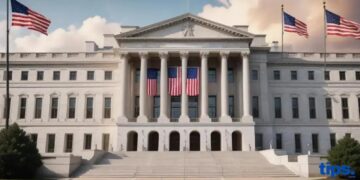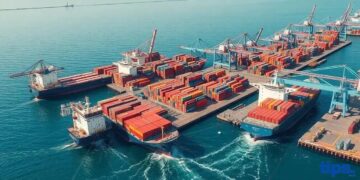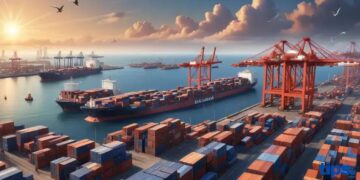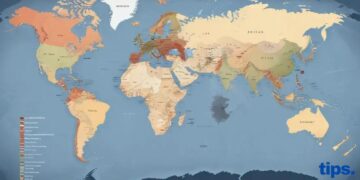US-China trade war: What it means for the global economy
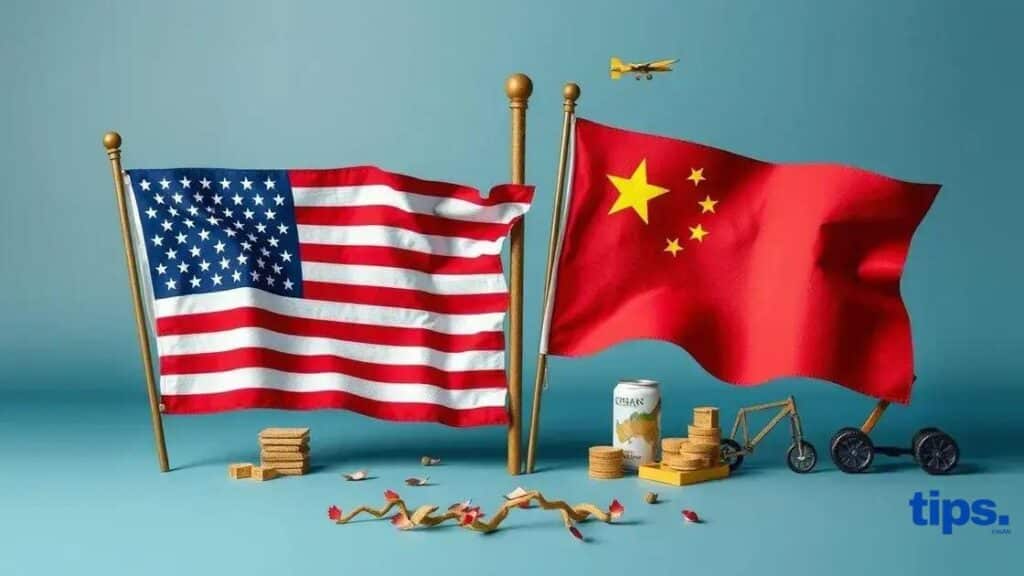
Anúncios
The US-China trade war significantly impacts global trade, leading to increased tariffs, shifts in supply chains, and necessitating adaptive strategies for businesses to remain competitive.
The US-China trade war has drastically reshaped international trade relations. Have you ever wondered how this ongoing conflict affects markets and economies around the globe? Let’s dive into its complexities.
Anúncios
Understanding the US-China trade war
The US-China trade war is a significant economic conflict between two of the world’s largest economies. It began in 2018 and has had far-reaching effects on international trade.
The main issue is the tariffs imposed by the United States on various Chinese goods. These tariffs aim to reduce the trade deficit and encourage China to change its trading practices.
Reasons Behind the Trade War
Several factors led to the escalation of this trade war:
Anúncios
- Intellectual property theft concerns.
- Trade imbalances between the two countries.
- Challenges related to China’s government policies.
These issues have resulted in a cycle of retaliatory tariffs between the US and China, affecting millions of workers and consumers.
For further insights, you can check the official report from the US International Trade Commission.
Historical context of trade relations
The historical context of trade relations between the US and China is complex and influential. It shapes the dynamics of the ongoing trade war. For decades, both nations have engaged in substantial trade.
In 1979, the US and China established formal diplomatic relations, opening pathways for trade and investment. This marked a significant change in their relationship.
Key Milestones in Trade Relations
- China’s accession to the World Trade Organization (WTO) in 2001 increased global trade.
- Trade volumes soared, but issues like trade imbalances and intellectual property disputes emerged.
- The years leading to 2018 saw tensions rise over tariffs and trade policies.
Understanding this background is essential to grasp why tensions have escalated recently. More detailed insights can be found on the Cato Institute website.
| Topic | Insight | Tip |
|---|---|---|
| What Is It? | Conflict over tariffs | Watch trade updates |
| Started In | 2018 | Driven by trade gap |
| Main Issues | IP theft, imbalance | Push fair trade |
| Tariff Impact | Prices increased | Plan for cost hikes |
| Supply Chains | Shifted worldwide | Diversify suppliers |
| Global Response | Leaders urged peace | Support diplomacy |
| Outlook | Still uncertain | Follow global trends |
| Business Tips | Adapt fast | Innovate, localize |
Key players in the trade war
The key players in the trade war between the US and China include various government officials, agencies, and large corporations that influence trade decisions.
At the heart of this conflict are economic policies, trade practices, and competitive strategies that shape the global market.
Important Figures and Entities
- U.S. Government: Key leaders like the President and trade representatives set the direction for tariffs and trade agreements.
- China’s Government: The Chinese leadership plays a critical role in negotiating terms and setting trade policies.
- Major Corporations: Companies like Boeing and Huawei have vested interests in trade outcomes, affecting their operations and profitability.
Additionally, international organizations, like the World Trade Organization (WTO), mediate disputes and provide guidelines for trade practices. For more insights on trade policies, visit the World Trade Organization website.
Major tariffs and their impacts

Major tariffs imposed during the US-China trade war have had significant impacts on both economies and global trade. These tariffs are taxes on imported goods, aimed to protect domestic industries.
The US has targeted various sectors, including steel, aluminum, and electronics, with tariffs ranging from 10% to 25%.
Effects of Tariffs
- Increased Prices: Tariffs lead to higher prices for consumers as import costs rise.
- Retaliation: China has responded with its own tariffs, impacting American exports like soybeans and vehicles.
- Market Uncertainty: Tariffs create instability, affecting business investment and planning.
These repercussions illustrate the interconnected nature of global trade. For a deeper understanding of tariffs and their implications, check the informative resources from the U.S. International Trade Administration.
Effects on global supply chains
The effects on global supply chains due to the US-China trade war are profound and widespread. Businesses around the world are feeling the impact of increased tariffs and trade tensions.
As tariffs rise, companies have to rethink their sourcing strategies and supply chain logistics.
Key Impacts on Supply Chains
- Disruption of Production: Many manufacturers face delays and higher costs, leading to potential production slowdowns.
- Shift in Sourcing: Companies are looking to find alternate suppliers outside of China to mitigate tariff impacts.
- Increased Costs: Higher tariffs mean higher prices for raw materials, impacting overall product pricing.
These changes not only affect the companies directly involved but also have repercussions throughout the global economy. For further analysis on supply chain shifts, refer to the McKinsey & Company report.
Reactions from world leaders
The reactions from world leaders to the US-China trade war have been varied and impactful. Different leaders express their concerns and strategies regarding the ongoing conflict.
Some view the trade war as a chance to address long-standing trade imbalances, while others worry about its effects on global stability.
Key Global Responses
- European Leaders: Many European officials call for dialogue, emphasizing the need for a multilateral solution to trade issues.
- Asian Leaders: Countries in Asia, heavily reliant on trade, are watching closely and preparing to adjust their economic policies.
- International Organizations: Groups like the WTO have urged both nations to resolve disputes through negotiation rather than escalating tariffs.
Understanding these responses helps clarify the international community’s approach to this complex issue. For more insights, check the full analysis on the United Nations website.
Future outlook of US-China trade relations
The future outlook of US-China trade relations is uncertain but important for global economics. Various factors will influence how these two countries interact in trade.
Analysts are paying close attention to upcoming negotiations, policy changes, and international responses.
Potential Scenarios
- Increased Cooperation: Both countries may find common ground through negotiations, reducing tariffs and promoting trade.
- Continued Tension: Trade disputes could escalate, affecting not only the US and China but also global markets.
- Shifts in Alliances: Other countries might step in to fill the trade gap, creating new partnerships in Asia and beyond.
Keeping an eye on these developments is crucial for businesses and policymakers alike. For more information on trade dynamics, visit the World Bank website.
Strategies for businesses to adapt

In the face of the US-China trade war, businesses must develop effective strategies to adapt to evolving market conditions. These strategies are crucial for maintaining competitiveness and ensuring continued growth.
Companies need to reassess their supply chains, pricing models, and market approaches to mitigate risks associated with tariffs and trade uncertainties.
Effective Business Adaptation Strategies
- Diversifying Suppliers: Companies should consider sourcing from multiple countries to reduce dependency on China and minimize tariff impacts.
- Innovating Products: Focusing on product innovation can help businesses differentiate themselves and attract new customers, regardless of trade policies.
- Engaging in Policy Advocacy: Businesses can work together to influence trade policies and advocate for favorable conditions that support their interests.
Implementing these strategies effectively will position businesses to navigate the challenges posed by the ongoing trade war. For additional resources and insights, visit the U.S. Small Business Administration website.
What Lies Ahead in US-China Trade Relations
The US-China trade war has reshaped global trade dynamics, affecting economies worldwide. The responses from both governments and global leaders highlight the importance of cooperation and understanding in international trade.
As we move forward, businesses must remain flexible and innovative, adapting their strategies to thrive in a changing landscape. By diversifying suppliers and focusing on innovation, companies can better navigate potential challenges.
In summary, understanding the implications of this trade conflict and adapting proactively will be key for businesses aiming for growth and success in the future.
